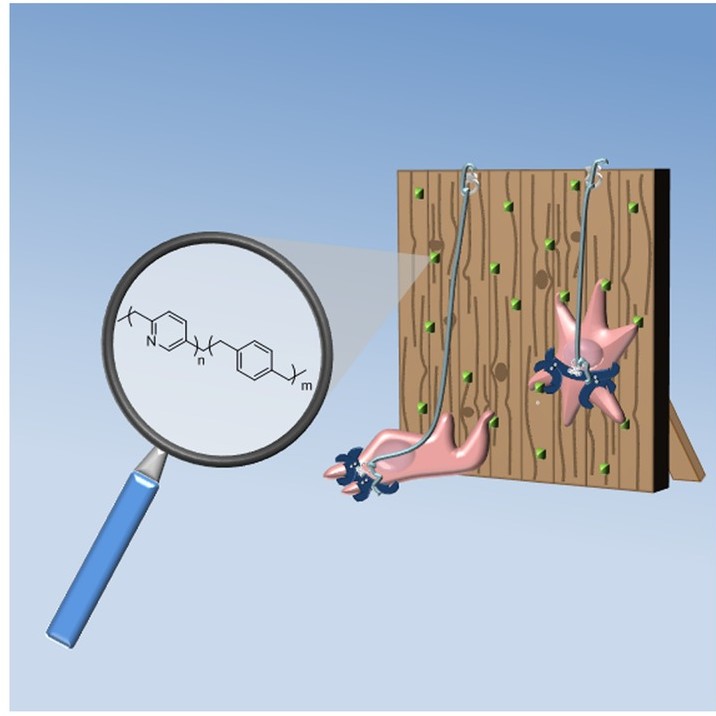Polylutidines: Multifunctional surfaces via vapor-based polymerization of functional pyridinophanes
Published in Chemistry: A European Journal, 2017
Recommended citation: Bally-Le Gal, F., Hussal,C., Kramer, J.J.P., Cheng,K.C.,Kumar,R., Eyster,T., Trouillet,V., Nieger,M., Brase,S.,& Lahann,J. (2017) Chemistry: A European Journal, 23, 13342-13350.

We report a new class of functionalized polylutidine polymers that are prepared by chemical vapor deposition polymerization of substituted 2benzeno2pyridinophanes. To prepare sufficient amounts of monomer for CVD polymerization, a new synthesis route for ethynylpyridinophane has been developed in three steps with an overall yield of 59 %. Subsequent CVD polymerization yielded well‐defined films of poly(2,5‐lutidinylene‐co‐p‐xylylene) and poly(4‐ethynyl‐2,5‐lutidinylene‐co‐p‐xylylene). All polymers were characterized by infrared reflection–absorption spectroscopy, ellipsometry, contact angle studies, and X‐ray photoelectron spectroscopy. Moreover, ζ‐potential measurements revealed that polylutidine films have higher isoelectric points than the corresponding poly‐xylylene surfaces owing to the nitrogen atoms in the polymer backbone. The availability of reactive alkyne groups on the surface of poly(4‐ethynyl‐2,5‐lutidinylene‐co‐p‐xylylene) coatings was confirmed by spatially controlled surface modification by means of Huisgen 1,3‐dipolar cycloaddition. Compared to the more hydrophobic poly‐p‐xylylyenes, the presence of the heteroatom in the polymer backbone of polylutidine polymers resulted in surfaces that supported an increased adhesion of primary human umbilical vein endothelial cells (HUVECs). Vapor‐based polylutidine coatings are a new class of polymers that feature increased hydrophilicity and increased cell adhesion without limiting the flexibility in selecting appropriate functional side groups. Download paper here